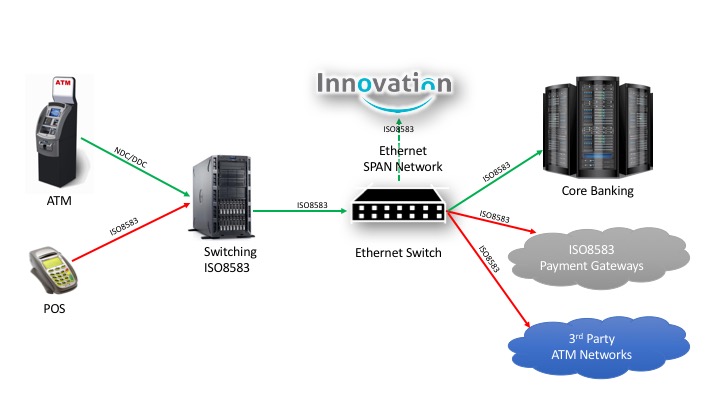financial transaction card originated interchange messaging – ISO 8583

ISO 8583 is an international standard for financial transaction card originated interchange messaging.
It is the International Organization for Standardization standard for systems that exchange electronic transactions initiated by cardholders using payment cards.
ISO 8583 defines a message format and a communication flow so that different systems can exchange these transaction requests and responses. The vast majority of transactions made when a customer uses a card to make a payment in a store (EFTPOS) use ISO 8583 at some point in the communication chain, as do transactions made at ATMs. In particular, the Mastercard, Visa and Verve networks base their authorization communications on the ISO 8583 standard, as do many other institutions and networks.
The ISO 8583 specification has three parts:
Part 1: Messages, data elements, and code values[1]
Part 2: Application and registration procedures for Institution Identification Codes (IIC)[2]
Part 3: Maintenance procedures for the aforementioned messages, data elements and code values[3]
[wptb id=864]
Message format
A card-based transaction typically travels from a transaction-acquiring device, such as a point-of-sale terminal or an automated teller machine (ATM), through a series of networks, to a card issuing system for authorization against the card holder’s account. The transaction data contains information derived from the card (e.g., the card number or card holder details), the terminal (e.g., the terminal number, the merchant number), the transaction (e.g., the amount), together with other data which may be generated dynamically or added by intervening systems. Based on this information, the card issuing system will either authorize or decline the transaction and generate a response message which must be delivered back to the terminal within a predefined time period.
[wptb id=892]
An ISO 8583 message is made of the following parts:
Message type indicator (MTI)
One or more bitmaps, indicating which data elements are present. It consists of primary bitmap and secondary bitmap. The first bit of the primary bitmap indicates whether the secondary bitmap is present or not.
Data elements, the actual information fields of the message
The placements of fields in different versions of the standard varies; for example, the currency elements of the 1987 and 1993 versions of the standard are no longer used in the 2003 version, which holds currency as a sub-element of any financial amount element. As of June 2017, however ISO 8583:2003 has yet to achieve wide acceptance. ISO 8583 messaging has no routing information, so is sometimes used with a TPDU header.
Cardholder-originated transactions include purchase, withdrawal, deposit, refund, reversal, balance inquiry, payments and inter-account transfers. ISO 8583 also defines system-to-system messages for secure key exchanges, reconciliation of totals, and other administrative purposes.
Message type indicator (MTI)
The message type indicator is a four-digit numeric field which indicates the overall function of the message. A message type indicator includes the ISO 8583 version, the Message Class, the Message Function and the Message Origin, as described below.
ISO 8583 version
The first digit of the MTI indicates the ISO 8583 version in which the message is encoded.
Message class
Position two of the MTI specifies the overall purpose of the message
Message class
Position two of the MTI specifies the overall purpose of the message

